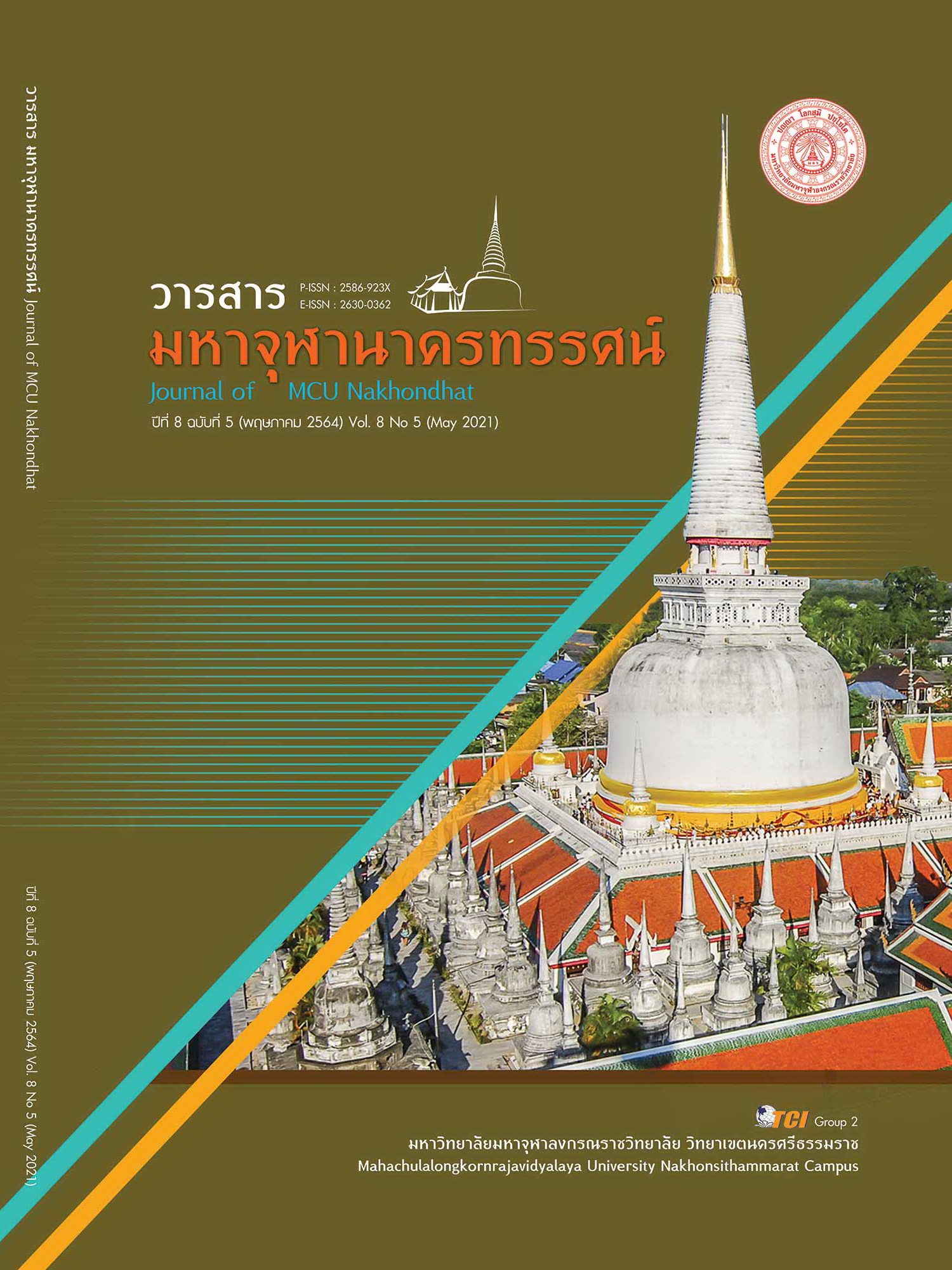SUB-DISTRICT ADMINISTRATION ORGANIZATION: THE GENERAL CONTENT, STATEMENT OF THE PROBLEM AND GUIDELINES TO REFORM
Main Article Content
Abstract
The purpose of this article was to study; General Content, Statement of problems, and Guidelines to reform Subdistrict Administrative Organization (SAO) The study found that; Subdistrict Administrative Organization (SAO) is Local Government and shall be constated as a Juristic person upon authorization by Law. The whole country has 5,300 SAO. under the Act of “Tambon Council and Subdistrict Administrative Organization” B.E.2537 (Amendment No 7) and the Act of Decentralization Process B.E.2542 to emend the Constitution B.E.2540 and B.E.2560. SAO Consists of the Chief Executive of SAO and the member of council of SAO, both of them shall be directly elected by the people and shall hold office for the period of four years. The member of SAO council shall have one for a village. If any Subdistrict has less than six villages shall have six members as a provided by law but the chief Executive of SAO is from elected whole of Subdistrict by the people. SAO has the duties to development, local ordinance, Taxation, management under supervision of central and rejoined administration. SAO consists of Chief administrator and staff are routine work. State of problems; SAO shall not enjoy autonomy such as; supervision, controlling, law and regulations, all problems are under Jurisdiction of Interior Ministry dominate, which is not according to the will of constitution. The Guidelines to reform; SAO should be reformed as follow; increasing the budget, recommendations with regard to revision of laws, rules or regulations for promote SAO. Autonomy, supervision, allocation of taxes and participation for inspection of the exercise of SAO in order to ultimate outcomes for all.
Article Details
References
นิพนธ์ ศศิธรเสาวภา. (2560). ภาวะผู้นำกับการปกครองท้องถิ่น. (พิมพ์ครั้งที่ 1). กรุงเทพมหานคร: สำนักพิมพ์แห่งมหาวิทยาลัยราชภัฎสวนสุนันทา.
ประกาศคณะกรรมการการกระจายอำนาจให้แก่องค์กรปกครองส่วนท้องถิ่น เรื่อง แผนการกระจายอำนาจให้แก่องค์กรปกครองส่วนท้องถิ่น พ.ศ. 2543. (2544). ราชกิจจานุเบกษา เล่ม 118 ตอนพิเศษ 4 ง หน้า 23 (17 มกราคม 2544).
ประกาศคณะปฏิวัติ ฉบับที่ 326. (2515). ราชกิจจานุเบกษา เล่ม 89 ตอนที่ 190 ฉบับพิเศษ หน้า 123 (13 ธันวาคม 2515).
พระราชบัญญัติกำหนดแผนและขั้นตอนการกระจายอำนาจให้แก่องค์กรปกครองส่วนท้องถิ่น. (2542). ราชกิจจานุเบกษา เล่ม 116 ตอนที่ 114 ก หน้า 56-58 (17 พฤศจิกายน 2542).
พระราชบัญญัติระเบียบการบริหารงานบุคคลส่วนท้องถิ่น. (2542). ราชกิจจานุเบกษา เล่ม 116 ตอนที่ 120 ก หน้า 4-14 (29 พฤศจิกายน 2542).
. (2542). ราชกิจจานุเบกษา เล่ม 116 ตอนที่ 20 ก หน้า 10-12 (29 พฤศจิกายน 2542).
พระราชบัญญัติสภาตำบลและองค์การบริหารส่วนตำบล. (2537). ราชกิจจานุเบกษา เล่ม 111 ตอนที่ 53 ก หน้า 16 (2 ธันวาคม 2537).
. (2537). ราชกิจจานุเบกษา เล่ม 111 ตอนที่ 53 ก หน้า 26-27 (2 ธันวาคม 2537).
พระราชบัญญัติสภาตำบลและองค์การบริหารส่วนตำบล พ.ศ. 2537 (ปรับปรุงฉบับที่ 7). (2562). ราชกิจจานุเบกษา เล่ม 136 ตอนที่ 50 ก หน้า 152 (16 เมษายน 2562).
พระราชบัญญัติองค์การบริหารส่วนจังหวัด. (2540). ราชกิจจานุเบกษา เล่ม 114 ตอนที่ 162 ก หน้า 14-15 (31 ตุลาคม 2540).
รัฐธรรมนูญแห่งราชอาณาจักรไทย. (2540). ราชกิจจานุเบกษา เล่ม 114 ตอนที่ 55 ก หน้า 73-74 (11 ตุลาคม 2540).
สมคิด เลิศไพฑูรย์. (2550). กฎหมายปกครองท้องถิ่น. กรุงเทพมหานคร: อรรถมลการพิมพ์.
อิทธิพล ทัศนา. (2542). อำนาจการออกข้อบัญญัติท้องถิ่นขององค์กรปกครองส่วนท้องถิ่น. กรุงเทพมหานคร: สำนักพิมพ์แห่งจุฬาลงกรณ์มหาวิทยาลัย.

